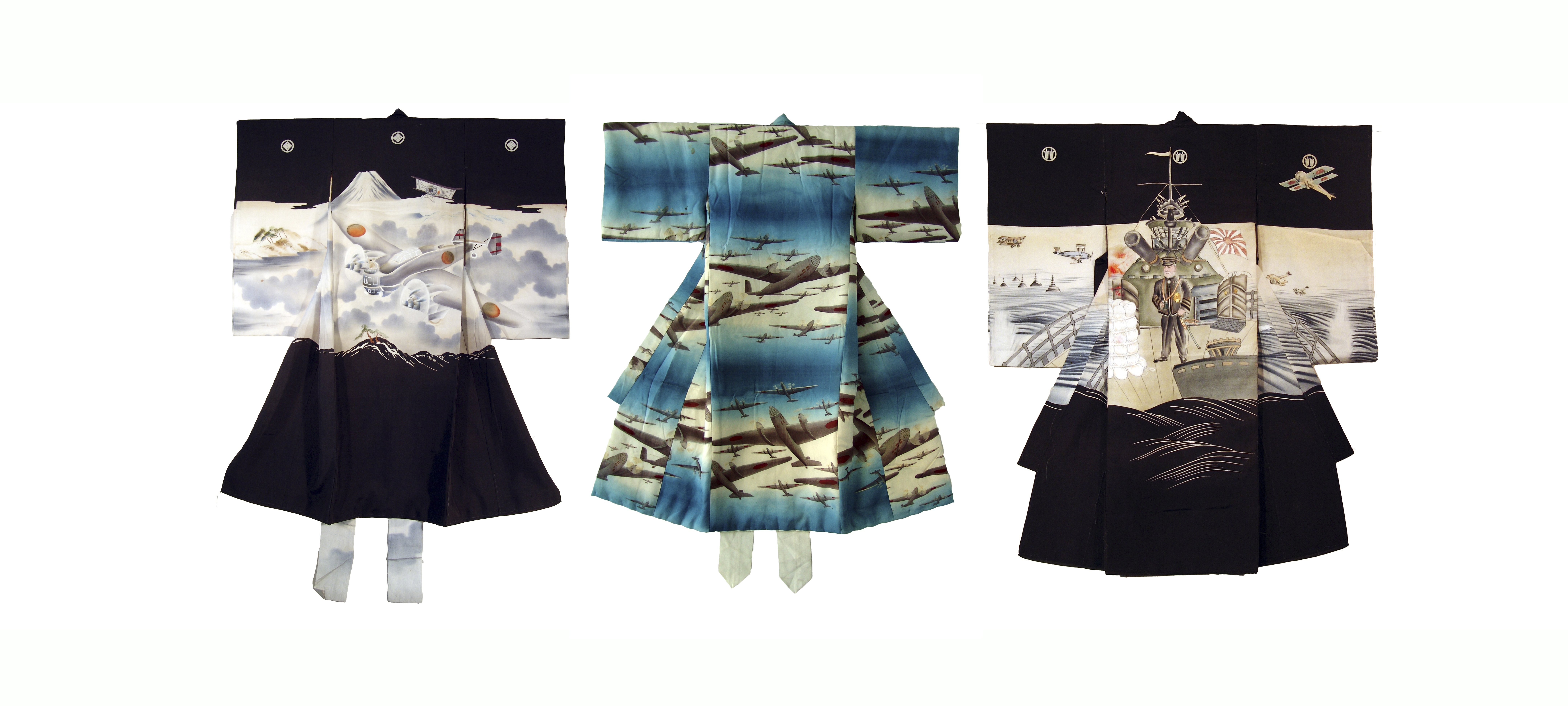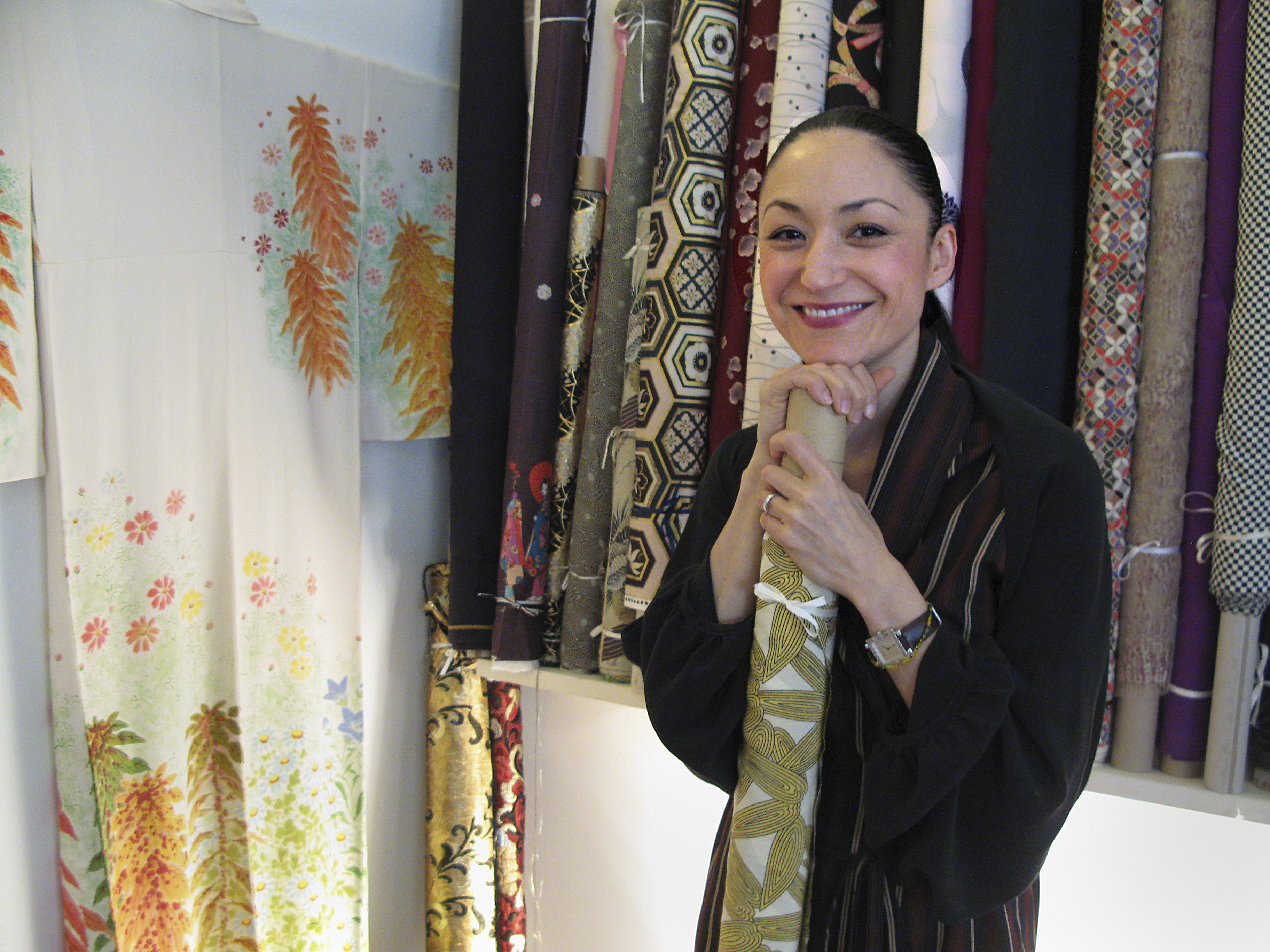Kimonos reveal Japanese wartime history

A villa overlooking Lake Lucerne in the heart of the Swiss Alps is home to a remarkable collection of more than 200 rare kimonos featuring unusual war imagery dating from the end of the 19th century.
“The first time I came across a catalogue of war kimonos I was fascinated. I fell in love with them instantly. I had no idea they existed,” explained Wolfgang Ruf, an art dealer from Beckenried, near Lucerne.
The German-Swiss dual national told swissinfo.ch, “As a German I have always felt guilty about the Second World War and it’s impossible for me to wear such propaganda clothing. That’s when I decided to collect them.”
Ruf has spent the past three years building up his extensive kimono collection. Planes and war ships, attack scenes, even one of Pearl Harbour: the images on the clothes are so detailed that you can clearly identify the weapons.
“The ancient clothes are beautiful but they also tell us about the social, cultural, economic and political contexts in which they were worn,” added Ruf. “It’s a real encyclopaedia of Japanese weaponry.”
Collecting kimonos has also taught him new things about Germany, where he was born, noted the 63-year-old.
“On this wing, it’s marked D-U KYM. It’s a plane sent to Japan by Hitler. That’s a true story that I came across on the internet,” he explained excitedly, pointing at one of the planes on a kimono.
Ruf is one of the main art experts dealing in European clothing and fabric from the 15th to 20th centuries. He recently sold 400 items of clothing to another Swiss collector, Martin Kamer, whose collection was then acquired by the Los Angeles County Museum of Art. Kamer’s collection was shown a month ago in Paris to rave reviews.
Traditional discretion
Yoshiko Inui, a professor at Tokai University in Sapporo, discovered kimonos with war motifs in 2000. She has collected around 500 for her own research and has published a book.
The Japanese specialist discovered that ‘war’ kimonos were produced over a fifty-year period from 1894 to 1942. At that time, Japan was involved in three different periods of conflict: with China (1894-95), with Russia (1904-05), later followed by a second conflict with China and the Pacific War (1937-45).
War images can be found on men’s kimonos worn either for formal occasions or in daily life. Motifs were printed on the juban (an under-kimono) or inside the haori (a jacket often made of black silk), so they were not directly visible. Discretion was part of the traditional culture of kimono wearing, said Inui. However, the war motifs were in plain sight on the kimonos of young boys.

More
Transforming the philosophy of kimono-wearing
Propaganda?
Despite their extensive collections, Inui and Ruf have little information about how often these kimonos were worn.
“We have photos of men wearing these kimonos, but we don’t know exactly when these clothes were worn,” said Ruf.
The experts say there is a certain ambiguity surrounding the clothing and whether it was actually used for propaganda purposes. The fact that there is not much evidence about its usage suggests that they were popular items, said Inui.
“The Japanese authorities didn’t order the production of war kimonos. Manufacturers that were fascinated by new production techniques and consumers interested in new things were generally responsible for their creation,” she added.
But both experts underline an important point – that young boys were made to believe that becoming a soldier was fashionable and honourable, and at that time, society as a whole contributed to the war propaganda.
In Ruf’s collection, a boy’s kimono shows Japanese soldiers disembarking on a Pacific island. Waving Japanese flags, the native children welcome them amid coconut trees.
“From our perspective this image might seem slightly shocking,” he said. “But Japanese citizens were taught at that time to think that the occupation was justified in order to help the locals.”
The kimono is a Japanese traditional garment worn by men, women and children. It was a common everyday item of clothing worn up until the end of the Taisho period (1912-26). From the end of the Second World War onwards it was worn for formal occasions such as tea ceremonies or at New Year.
The main motifs, especially for women, are flowers, birds, landscapes, clouds and snow.
Collection for sale
The Lucerne-based dealer’s collection is now complete and he is looking for a buyer.
“I now have enough kimonos to cover 50 years of Japan’s wartime history. If possible, I would like the collection to stay in Europe, say in Germany, but it may well go to the US,” he explained.
Whatever its destination, the collection is an excellent starting point to help better explain Japan’s wartime history, he added.
“Initially I only knew about the second Sino-Japanese war, Pearl Harbour and Hiroshima. This collection creates surprises and emotion. People ask ‘What is that?’ and ask questions about the reasons for war and the technological, political and economic contexts at the time. That is the strength of clothing and especially these war kimonos.”
This conflict was not covered by any photo reports, so kimono artists drew war scenes or weaponry from their imagination. These motifs are known as ‘Nishikie’ (Japanese wood-cut prints).
This war is documented in various photographs and postcards, which served as inspiration for the kimonos. Art nouveau styles, which had just been introduced into Japan, were also used in the war scenes.
‘Doga’ is a child-like artistic style that was popular during the Taisho period (1912-26). From the 1920s the motifs are detailed with tanks, aeroplanes and warships.
This period is also characterised by more varied kimonos. “This is a normal phenomenon. After the Meiji revolution if you were rich you could buy a kimono without worrying about your social class so production and variety increased and new manufacturing and colouring techniques were imported,” said Yoshiko Inui.

In compliance with the JTI standards
More: SWI swissinfo.ch certified by the Journalism Trust Initiative
You can find an overview of ongoing debates with our journalists here. Please join us!
If you want to start a conversation about a topic raised in this article or want to report factual errors, email us at english@swissinfo.ch.